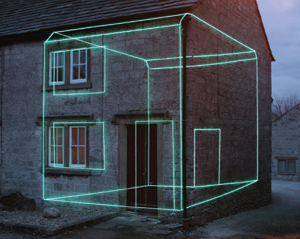In the first of four pieces examining the themes that provide the framework for Arts Council England’s consultation, Lucy Hutton considers what the digital revolution means for the arts.

No one can deny that we live in a digital age. With technological changes having such a profound impact on the way we live, it is essential that Arts Council England (ACE) looks at the opportunities and implications of digital technology for the future of the arts. It was therefore one area we focused on in the comprehensive review of research and literature we undertook to inform the consultation for our ten-year strategic framework for the arts, ‘Achieving great art for everyone’. This review set out the wider changes taking place in society and the challenges and opportunities they present for the arts over the next ten years. Digital technologies are already having a major impact on many of the creative industries, with research identifying the sweeping changes that are taking place in media. The ‘Digital Britain’ report1 recognised the changing role of arts organisations in providing high-quality, original digital content.
HOOKED UP
Our review also showed that digital technologies are having an impact on the ways in which people access information, consume, communicate and interact with the arts. Tom Fleming’s study, ‘Clicks Not Bricks’2, identifies organisations that are starting to develop interactive online spaces for creative collaboration, allowing users to create, share, remix and discuss their work. The study highlights FACT’s Tenantspin project which has enabled tenants of a Liverpool tower block to connect and share issues through film making. They now have a studio within FACT and have been commissioned by the BBC to write their own play. These collaborations blur the boundaries between audience and content creator and reflect the expectations of many Internet users. However, they also pose significant questions around changing attitudes to copyright and licensing of original material.
Qualitative research commissioned by ACE looked at how people currently engage digitally with arts content and arts organisations. The study found that digital technology has huge potential to deepen live arts experiences – enabling artists to develop their relationship with their audience, and giving people greater freedom to self-educate and personalise their online arts experiences. A review of the online presence of our portfolio of regularly funded organisations (RFOs) found good examples of organisations bringing great art to audiences in new, participative and interactive ways. These included the Philharmonia Orchestra’s educational tool that enables users to mix their own music using its ‘Sample Sequencing’ software3, and Resonance.fm’s site that allows users to stream radio shows live, as well as listen to an archive of podcasts and respond to content on a well-used discussion forum4. The qualitative research also found that users valued social experiences, which provides a challenge to us all in identifying how we can translate these experiences online.
UNTAPPED POTENTIAL
Little is currently known about the potential reach of arts in the digital space to attract new audiences. Though the increase in access to digital tools offers the opportunity to engage people creatively, it is not clear who, or how many people, are currently creating work online. Our research found that creative participation online appears to be a niche audience within a niche, only appealing to a small fraction of people, though this is complicated by what people consider as ‘the arts’ online. The study also identified issues of access and inclusion, with arts content in general only appearing to be reaching existing arts enthusiasts.
Content businesses have had to adapt their business models and audiences very rapidly and radically as a result of changing consumer attitudes towards online content. For arts organisations that are part-commercial and part-publicly funded, there are potential tensions between using digital technology to offer universal access to their content and using digital distribution channels to generate greater revenue from their work. The publicly funded arts sector is a long way from realising the full potential of digital opportunities.
But there have been success stories. Take the NT Live! project: research5 shows that their experimentation with cross-platform distribution resulted in new audiences for theatre (AP211), with many respondents claiming that the project made it more likely for them to visit a theatre in future. It is essential that we continue to make this kind of knowledge available to the whole sector, so we can continue to help organisations develop business models to distribute their content more widely, and judge the extent of the demand for this.
With technology developing so quickly, and with so little known about the impact it will have in future, we need to be comfortable trying out ideas, learning from successes and failures and exchanging knowledge with others. The role of ACE’s strategic ten-year framework and the consultation is to ensure that we are aware of the context in which we make decisions, and responsive to what people tell us about how the changes in the wider environment affect the way they work. Tell us what you think.
Lucy Hutton is Senior Strategy Officer, Research at Arts Council England.
e lucy.hutton@artscouncil.org.uk
w http://www.artscouncil.org.uk/consultation
This week Lucy visited ‘Exhibitionism’ at the Courtauld Institute, where she was shocked by Jordan McKenzie’s Spent and amazed at the beautiful glass sculptures of human viruses by Luke Jerram (whom she went to school with). She also experienced watching Avatar in 3D, and is looking forward to watching the RSC’s film production of David Tennant’s Hamlet.
1‘The Digital Britain Final Report’, published by the Department for Business, Innovation and Skills and the DCMS, June 2009. http://www.culture.gov.uk/what_we_do/broadcasting/6216.aspx
2‘Crossing Boundaries – The role of cross-art-form and media venues in the age of “clicks” not “bricks”’, commissioned by the UK Film Council in association with Arts Council England and the Arts and Humanities Research Council, May 2008. http://www.ukfilmcouncil.org.uk/article/14371/crossing-boundaries-the-role-for-cross-art-form-and-media-venues-in-the-age-of-clicks-not-bricks
3 http://www.philharmonia.co.uk/thesoundexchange/
4 http://resonancefm.com/
5‘Beyond Live: digital innovation in the performing arts’, by Hasan Bakhshi, Juan Mateos-Garcia and David Throsby, February 2010. http://www.nesta.org.uk/publications/assets/features/beyond_live



